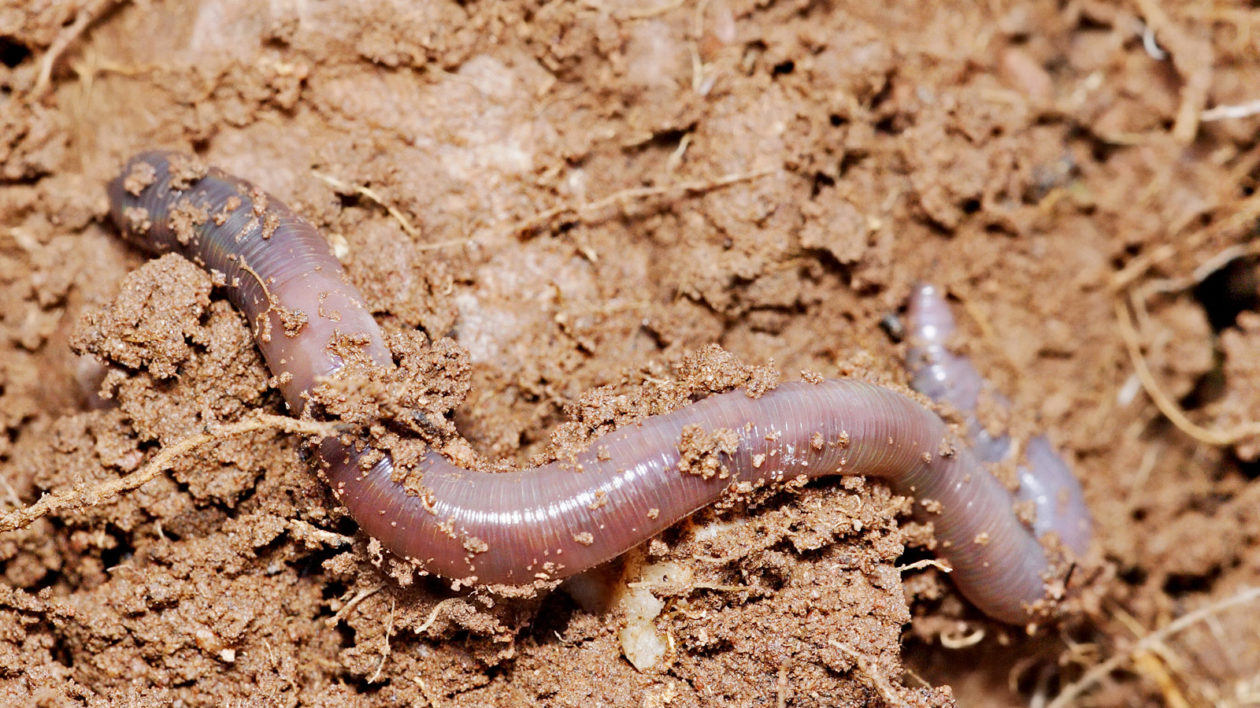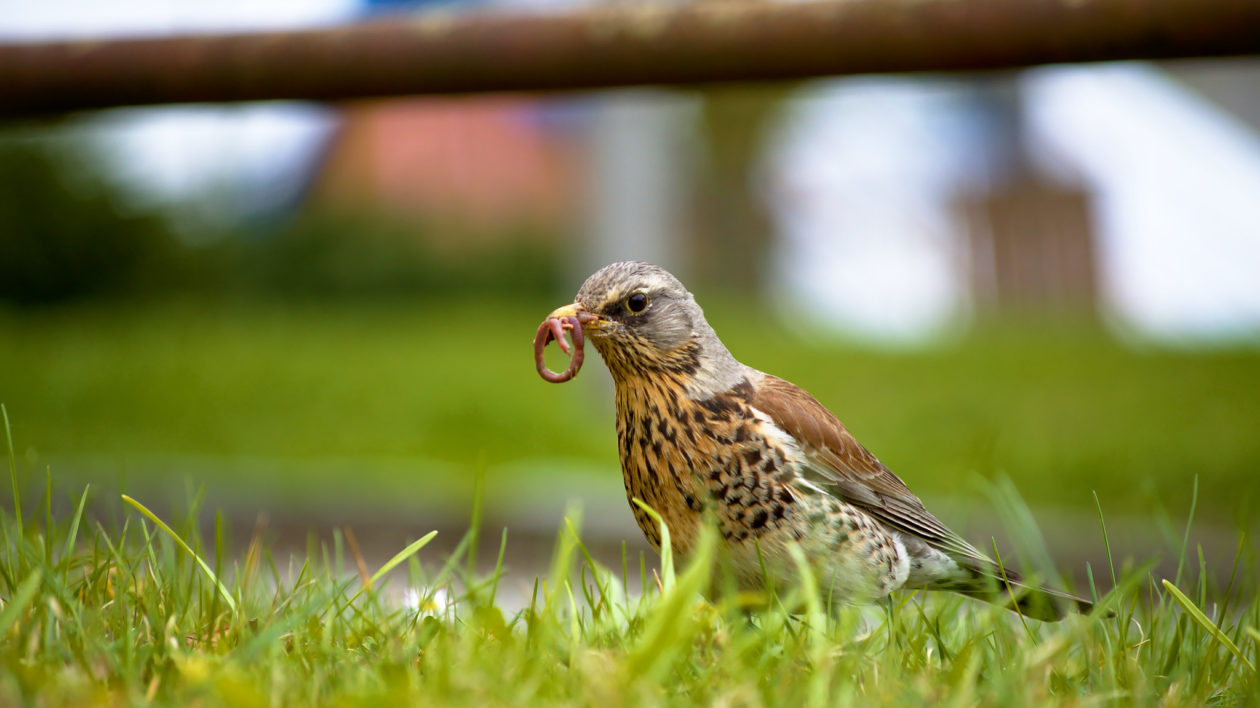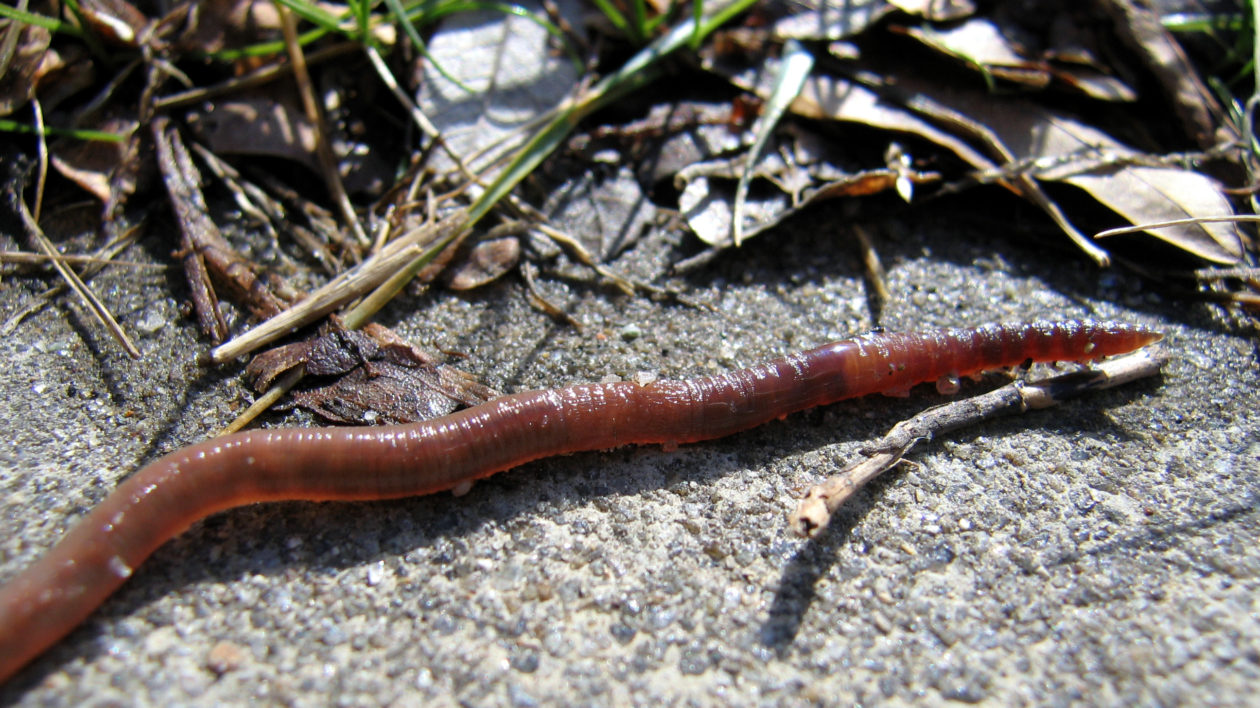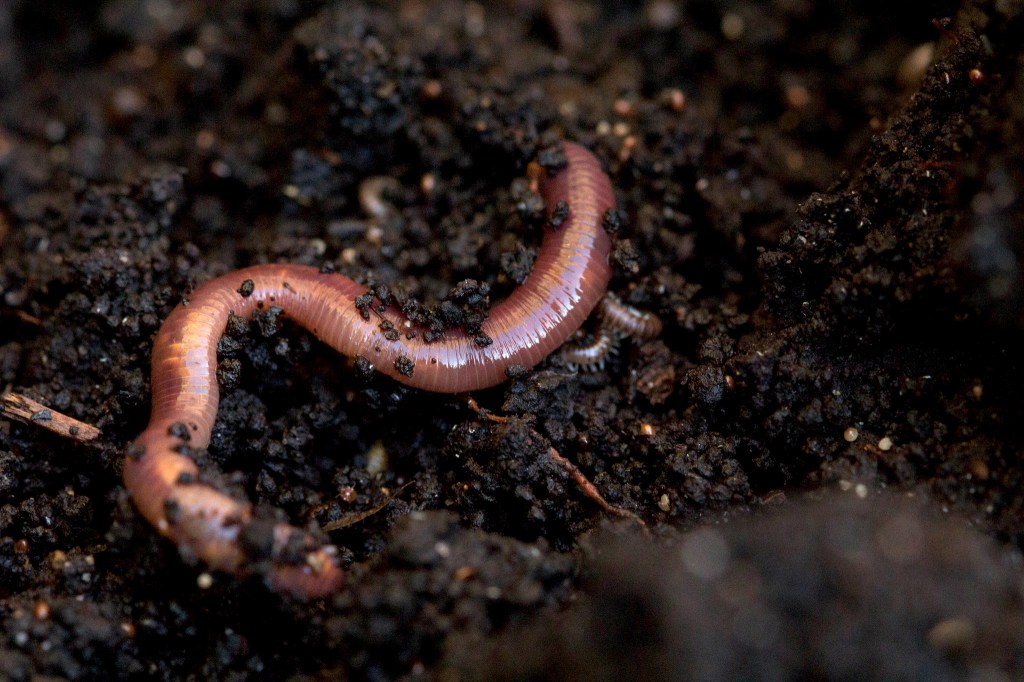I spent much of my walk across town this morning dodging earthworms. It has rained much of the past 24 hours, and the worms were everywhere. On the sidewalk, in puddles, on the street.
Many of us have seen so many earthworms emerging after rainstorms that we don’t pay much attention. Even the most curious urban naturalist probably doesn’t think about it much, because we already assume we know what’s going on. It is probably one of the first “nature lessons” we learned at school: earthworms have to come to the surface after rain because they’re drowning.
As is the case with so many nature stories, the real reason is likely more complicated than we imagine. Let’s dig deep, if you’ll pardon the pun, and look at what’s really happening when we see earthworms on a soggy sidewalk.
The Truth About Drowning Worms
Conventional wisdom holds that earthworms head to the surface after rain because they can’t breathe. This is still taught to schoolkids, and you can find a lot of detailed explanation online. Most claim that worm trails and air pockets underground become submerged, and the earthworms can’t breathe. It makes sense.
Most researchers, though, dispute this explanation. As Chris Lowe, a researcher at the University of Central Lancashire, points out in Scientific American, earthworms breathe through their skin and require moisture to do so.
Become a Member
Make a lasting impact for nature when you join The Nature Conservancy
Humans drown when their lungs fill with water. This is not possible for earthworms as they lack lungs. Multiple studies have also shown that most earthworm species can survive being submerged in water for two weeks or more.
Lately, most popular scientific accounts write off the “drowning worm” idea as a myth. While it is certainly not likely the entire explanation, perhaps we shouldn’t entirely rule it out. Research published in the journal Invertebrate Biology, for instance, found that worm behavior following rain depended on the species.
Two earthworm species with different life histories were investigated by the Taiwanese researchers. One species consumed more oxygen at night than during the day, and the other consumed lower amounts of oxygen equally during a 24-hour period.
The species that consumed more oxygen at night tolerated water immersion poorly. At night, when it needed oxygen the most, it was especially intolerant of rainfall and came to the surface.
The other species never came to the surface, even during the rain. Its consistent, lower intake of oxygen enabled it to better stand water immersion.
So it may well be that the earthworms you see on sidewalks and streets are those that need more oxygen. But many researchers doubt this is the entire explanation.

Raindrops Sound Like…Moles?
Another common explanation for worm emergence is that rain sounds like predators, so the worms come to the surface to escape. Moles, common earthworm predators, make vibrations in the soil as they hunt.
A tradition in the Appalachians and elsewhere, called worm grunting or fiddling, involves using a saw or stick to make vibrations on the soil’s surface. This brings worms to the top that are then harvested for bait. Essentially, humans are mimicking the sounds of hunting moles. (I admit I have tried this without much luck).
The predation-escape theory suggests that the patter of raindrops is also similar to the sound of moles. University of Wisconsin professor Thea Whitman notes that this theory has never been demonstrated in laboratory tests. It always seemed like an unconvincing explanation to me. After all, worms emerge after a prolonged, misty rain that doesn’t strike the ground with as much force.

It’s Not All The Worms
If worms were dying due to moisture, or fleeing predators, you might expect to see a broad cross-section of a given worm population. But that’s not the case. After a rainstorm, not all of the worms of a given species come to the surface.
As Phil Nixon of the University of Illinois explained to Mental Floss:
“If the other factors were the driving influences, large numbers of juvenile worms should also be present, but the vast majority appears to be adult red worms with occasional adult nightcrawlers. When worms are brought to the surface with electricity, worm-grunting, or chemicals, many more worms are present. It is obvious that only a small percentage of the adult red worms are emerging during heavy rains.”
Think about this. You are not seeing young earthworms in your damp backyard. If they were faced with certain death, they’d be there with all the adults.
Something else is going on.

Moving on Up
Many earthworm and soil experts have settled on a version of this explanation: Moving around the soil is relatively slow and difficult, even for earthworms. They can cover a lot more ground on the surface. The problem is, earthworms need to stay moist. Most of the time, they would dehydrate if they were above ground.
But when it rains, the surface is moist enough for worms to survive and remain hydrated. For a few species, they can more easily move about and find mates. For other earthworms, it may well just be a way to disperse and move into new territory. They can migrate much longer distances than they ever could underground.
Of course, coming to the surface poses hazards. The earthworms are easy pickings for birds and other predators. In our urban and suburban world, they also get trapped on sidewalks, patios and roads. The worms I encountered this morning gave the impression that their migration strategy was a failed one. But most worms survive. They move across the lawn or park and burrow back into the soil without any problems.
There undoubtedly will be new research and new revelations about the lives and habits of earthworms. Nature’s mysteries are not just “out there” in the wilderness. The common creatures that live around us still hold surprises. Take a moment and observe the phenomenon happening in the natural world, right now, where we live. The surprises and wonders are right under our feet.




so it is believed in theory that the reason worms come up to the surface are due to one being a certain species, and the other being that they are simply trying to cover more ground. If this is the case then I would love to see a video show the migration an earthworm takes in ones lifetime.
The photo in the articles describes an American robin (Turdus migratorius), but the bird is more likely the European fieldfare, (Turdus pilaris) a thrush species in the same genus. Look it up.
That doesn’t look like any American Robin I’ve ever seen. However, I do not recognize that bird – maybe some kind of European thrush.
Macadam and cement surfaces didn’t exist millennia ago, so why are they slithering so frequently in the modern across such surfaces..? A “learned” behavior, probably not. Smell the water sheen, more likely.
Nice post. Loved the new knowledge!
I observed that after several months of flooding on the Skunk River in 1993, some invasive species from Europe and Asia were exterminated. Native Diplocardia species were still there. I had collected all a few years prior. Thus some tolerated saturated soils and others did not. Soil atmosphere conditions are generally low in oxygen, so even brief periods of saturation can reduce oxygen availability rather quickly. Oxygen has poor solubility in water. Earthworms surviving in water for weeks on end usually is with aerated water.
Another thing: emergence with heavy rain is greatly reduced once plants have leafed out and are sucking water from the soil.
after rains I findmany very small, baby, earthworms in my dogs bowl drowned in the water in the bottom. why and how do they get there?
Maybe the question should be posed: why do earthworms burrow? Perhaps their need for moisture leads them downward during dry spells following the water.
I can’t wait to tell more people about this. I get to be Norm from Cheers and spread biophilia at the same time.
Thanks for this thought-provoking post, Matt. Maybe it will pique the interest of a budding biologist who one day will discover the answer to this puzzle .
Despite my personal “ish” factor, I read this piece and appreciate the information. Among my strongest memories of growing up in Denver pre-drought, is that of attending St. Vincent de Paul grade school. After the inevitable afternoon showers, the worms were up and about everywhere and the stinky boys would grab them and throw them at the girls. I hated the smell of earthworms, too. Still do. So, no love lost here. — But I enjoyed the article. 🙂
The illustration shows a Fieldfare, not an American Robin.
I often move live earthworms off the sidewalk with my hand and drop them on nearby grass after rain. Good or bad idea? I don’t want them to be stepped on. ?
I move night crawlers that have crawled onto our crushed stone driveway onto grassy or dirt areas, too. When I see them in the morning, after a rain, it appears that they’ve been there awhile b/c they have little stones attached to their bodies. The driveway is a big expanse for a little creature and I know they’ll die if they can’t get to grass eventually or before the sun is on them awhile. Kindness is important to all living creatures.
This article is very timely. Unfortunately it doesn’t definitively answer the question, hmm, that’s the wonderful world of nature. We had several days of rain in Santa Barbara. I was surprised to find a pile of small worms (>50) hanging out in the corners of the covered porch–at the top of two stairs. They were all along the wall (~3 feet). Most of these were already dried out. I was more surprised on two mornings to find worms that had crawled about three feet into our living room. They must have that entered the house by crawling under the door at night. Needless to say, I was very curious about this migration of earthworms. I always enjoy reading the “Cool Green Science” articles. Keep up the great work.
Thank you for this article. I truly enjoyed learning of this new theory.